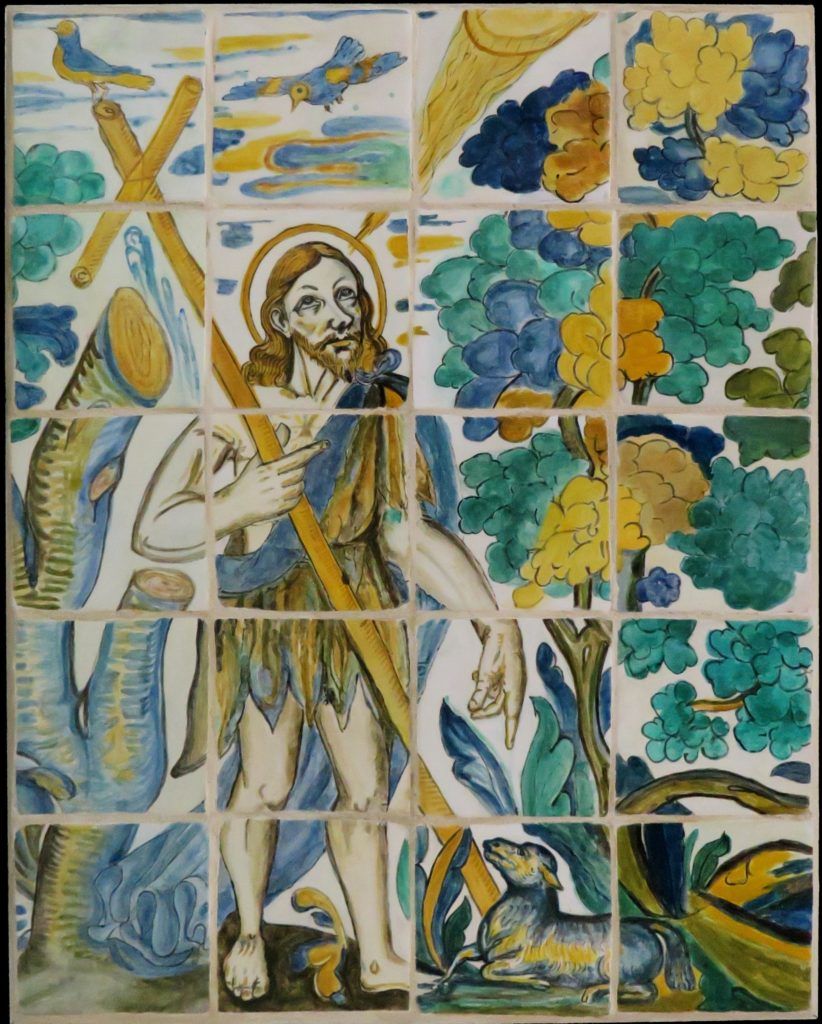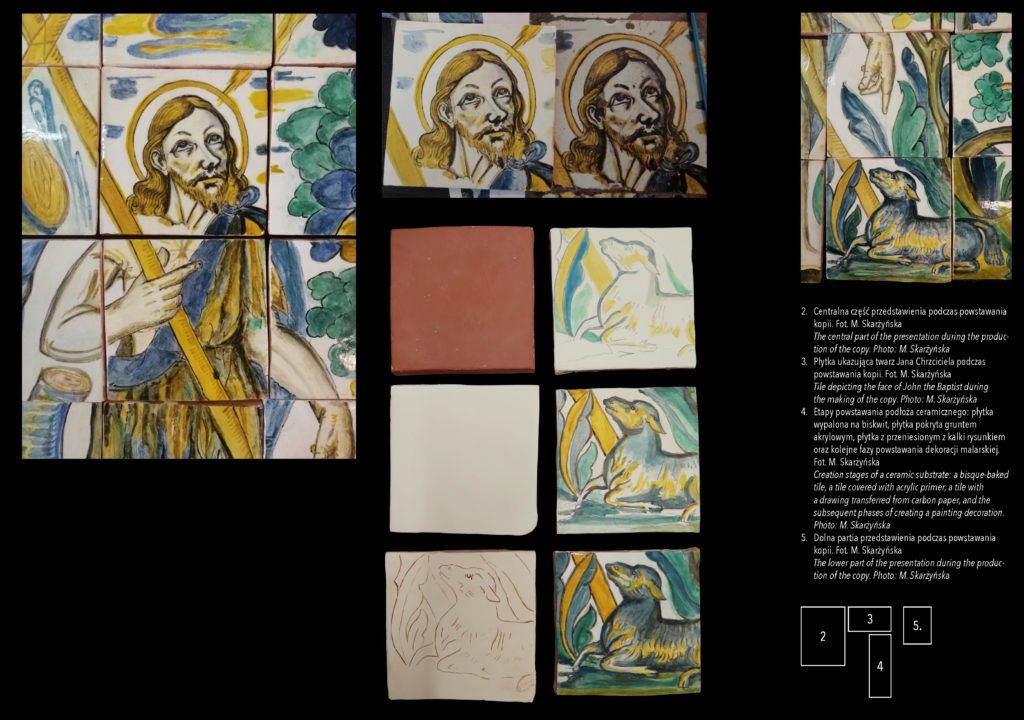The Monastery of Santo Domingo in Lima is located in the historic center of the Peruvian capital. It was established in the 16th century, but over the centuries it underwent numerous transformations. In 2017 and 2018, conservation research was carried out there on the ceramic decoration of the patio. The works were carried out by the Department of Conservation and Restoration of Works of Art at the Academy of Fine Arts in Warsaw in cooperation with Centro de Estudios Andinos de la Universidad de Varsovia en el Cusco. The research team included: prof. Jacek Martusewicz (team leader), dr Rafał Nijak, Anna Kudzia, M.A., Magdalena Skarżyńska, M.A., Dominika Sieczkowska, M.A., and Sylwia Siemianowska, M.A.
The courtyard – the garden located inside the monastery walls – is a place of silence and contemplation. The one located in the Santo Domingo monastery is surrounded by cloisters, and its walls are decorated with ceramic decorations depicting the figures of saints, patriarchs, as well as floral ornaments. They were conducive to religious meditation and prayer, and provided coolness on hot days. The original decoration of the courtyard was created in the first years of the 17th century, and most of the tiles were brought by ships from Seville, Spain. Some of the panels showing more complex genre and religious scenes are characterized by a different style and technology. The artist who created them tried to achieve chiaroscuro modeling. He did not apply the glazes with a flat stain and the multi-colored glazes were combined and mixed within one form. These representations come from the local workshop of Juan del Corral, a ceramist well-known in Lima. One of them is the scene depicting St. John the Baptist, which is located on the south-west wall of the courtyard.
Before starting restoration works, conservators carry out a series of specialist tests to assess not only the state of preservation of the artwork, but also to understand the original technology of its execution. It was similar with the tiles decorating the patio of the Santo Domingo monastery. They also had to assess what are the factors damaging the ceramic decoration.
The state of preservation of the artworks was analyzed, and specialized thermovision and humidity tests as well as excavations were performed. After collecting photographic materials and samples, the research was continued in laboratories in Poland.
One of the difficulties faced by ceramics conservators is the reconstruction of glazed surfaces. If they have to recreate a fragment of the representation, they cannot do it with traditional ceramic techniques as this could damage the artwork and it would be technologically complicated. The technique of firing multi-colored glazes at high temperatures brings about effects that are difficult to predict. Chemical processes take place in the furnace, the results of which are often impossible to predict. In order to create a ceramic copy that accurately reproduces both the color of glazed surfaces and imperfections, which are an indispensable element and characteristic of many glazed objects, it was decided to make a copy using „cold” conservation techniques.
Based on detailed photos and drawings made in Lima, a copy of the fragment depicting St. John the Baptist was created.
In the previous season of works, samples of paints later used to make copies were created, which were subjected to laboratory aging tests and left for several months in the conditions of outdoor exposure in the monastery. As a result, the durability and aging of selected conservation materials were verified. This will allow for the continuation of conservation works in the Santo Domingo monastery in Lima using a thoroughly tested and developed method.
Magdalena Skarżyńska
The Academy of Fine Arts in Warsaw

